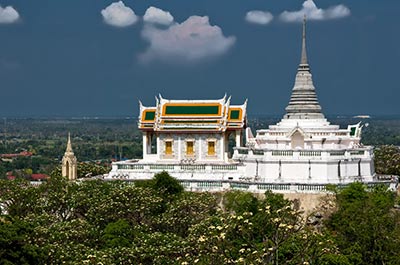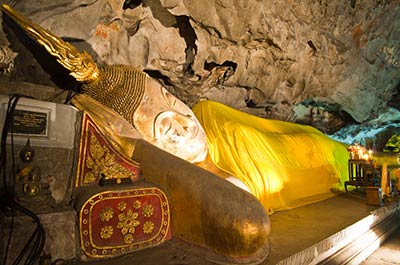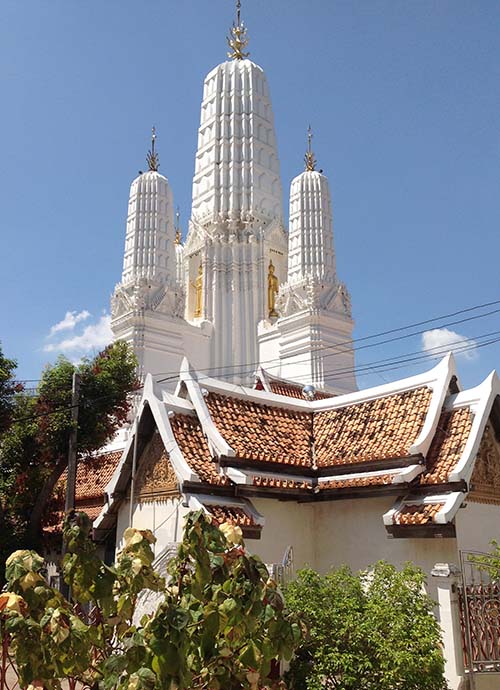
Wat Mahathat Worawihan
Royal temple with five massive prangs
Phetchaburi town
The Wat Mahathat Worawihan is a Royal temple located in an old, busy district with narrow lanes and wooden shop houses in the old center of Phetchaburi town.
The large complex is surrounded by a wall with several large elaborate entrance gates. The Wat Mahathat Worawihan comprises of five large prangs, a viharn, an ubosot, several chedis, the kuti and several other monastic buildings. Most eye catching are the five white prangs towering above the area, that are visible from much of Phetchaburi town. The temple is also known for its extensive fine stucco work.
Busy temple
It is a busy temple where devotees make merit by burning incense sticks, offering flowers and applying gold leaf on Buddha images. Near the entrance a group of dancers and musicians performs wearing traditional clothing.
History of the Wat Mahathat Worawihan
Although the founding date of the temple is unknown, it is believed that the Wat Mahathat dates back to the late Mon Dvaravati era or the Khmer era. Objects found during excavations suggest the first structures were built between eight to ten centuries ago. Today nothing remains of the original structures. The prangs have been rebuild and enlarged many times over the course of the centuries.
The five prangs
At the center of the Wat Mahathat is a large courtyard enclosed by a cloister. At the center of the courtyard stand five massive prangs, known as “Phra Prang Ha Yod”, or five peak prang. The Khmer/Lopburi style towers were constructed during the Sukhothai era.
Surrounded by four smaller ones, the tallest central prang rising over forty meters enshrines Buddha relics. Enshrined in large niches on all of its four faces are standing golden images of the Buddha. The brick plastered prangs, decorated with fine stucco work are topped with a trishula, a three pointed spear, the weapon of the Hindu God Shiva. Sheltering them is a small multi tiered ceremonial umbrella.
Cloister with Buddha images
The cloister enclosing the courtyard is lined with dozens of Buddha images, most of them in the subduing Mara posture. At night the prangs are beautifully illuminated.
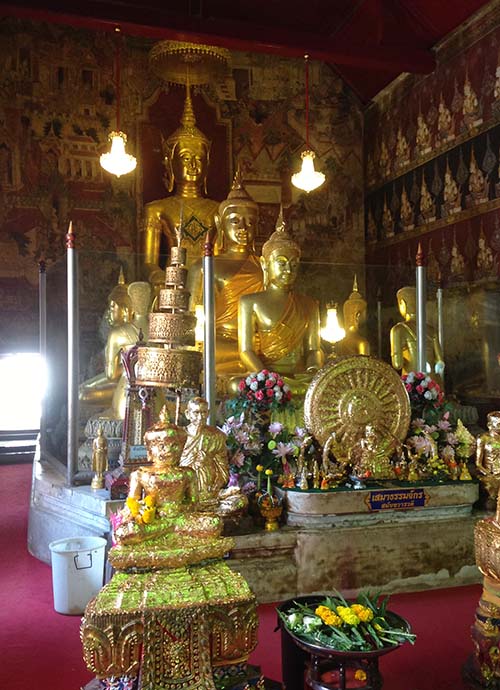
The viharn
Opposite the main entrance stands the temple’s large viharn, the assembly hall where devotees come to pray, make merit or seek advice from a monk. Its front gable is decorated with stucco reliefs, angels adorn the ends of the bargeboards.
Walking Buddha image
At the center of the porch between the two entrance doors stands a large walking image of the Buddha raising his left hand, the gesture that symbolizes teaching, called the Vitarka mudra. Behind it a mural depicts the Buddha flanked by devotees in admiration.
Colorful murals
The interior walls contain colorful murals some of which unfortunately are in a poor condition. Painted in the late Ayutthaya or early Rattanakosin era, the murals depict scenes of daily life, battles and Buddhist stories, including one of the demon Mara attacking the Buddha meditating under the Bodhi tree. The upper part of the side walls are adorned with depictions of devatas, devine beings.
Ayutthaya era Buddha image
To the back of the viharn are three large images of the Buddha in front of each other surrounded by several smaller images of devotees and important monks. The principal Buddha image was cast during the Ayutthaya era. The elaborately decorated pedestal supporting the images is carried by warriors and mythical beings. A large Dhamma wheel covered with gold leaf symbolizes the Buddhist teachings.
The ubosot
Next to the viharn stands the ubosot or ordination hall. Its front gable is adorned with stucco reliefs, while angels embellish the ends of the bargeboards. With its whitewashed walls and red wooden roof the interior is fairly plain. The ubosot enshrines a large golden image of the Buddha in subduing Mara posture, seated on an elaborate pedestal surrounded by various smaller statues.
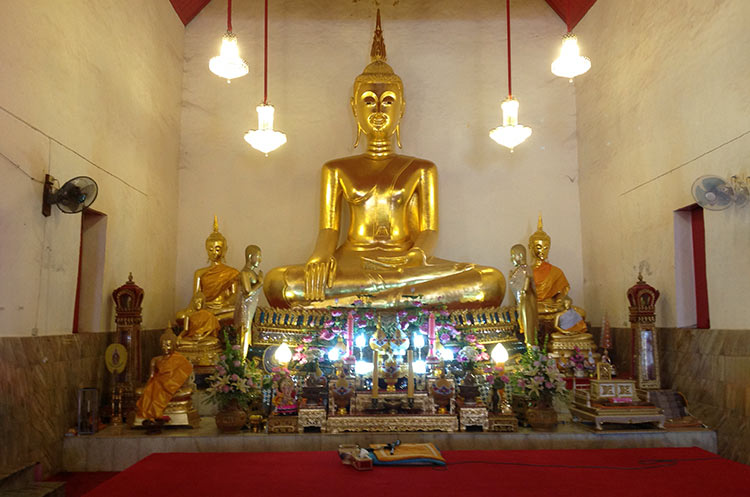
How to get to the Wat Mahathat Worawihan
The temple is found on Thanon Ban Dai It on the West bank of the Phetchaburi river in the center of Phetchaburi town, about 1½ kilometer South of Phra Nakhon Khiri Historical Park.
Opening hours
The temple can be visited daily during daylight hours.
The Wat Mahathat Worawihan is well visited. Especially on weekends and Thai National Holidays the grounds can get busy.
Please dress respectfully and remove your shoes before entering a temple building.
Entrance fee
Admission to the grounds is free.
